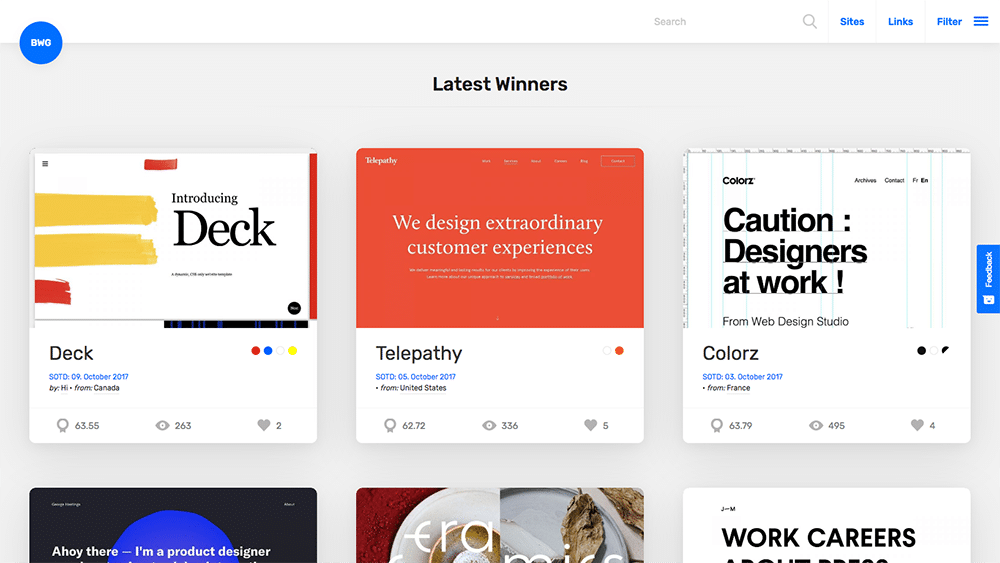Web Design Company Singapore: Elevate Your Brand with Expert Design
Wiki Article
Top Trends in Internet Site Layout: What You Need to Know
As the landscape of website design remains to progress, recognizing the current trends is crucial for developing efficient and appealing online experiences. Minimalism, dark mode, and mobile-first approaches are among the essential themes shaping contemporary layout, each offering unique advantages in customer interaction and capability. In addition, the emphasis on accessibility and inclusivity underscores the value of developing digital atmospheres that cater to all users. However, the implications of these patterns exceed looks; they represent a change in exactly how we view individual interaction. What other variables are influencing these design selections today?Minimalist Style Aesthetic Appeals
Recently, minimalist layout looks have actually arised as a leading pattern in website style, stressing simplicity and capability. This technique focuses on crucial material and gets rid of unneeded aspects, therefore improving user experience. By focusing on clean lines, sufficient white room, and a limited color palette, minimal designs help with less complicated navigating and quicker tons times, which are vital in maintaining customers' attention.Typography plays a considerable role in minimalist style, as the option of font style can stimulate specific emotions and guide the customer's journey with the content. The tactical usage of visuals, such as high-quality images or subtle computer animations, can improve individual involvement without overwhelming the total visual.
As digital rooms proceed to develop, the minimal layout concept continues to be pertinent, accommodating a varied target market. Companies adopting this trend are often regarded as modern and user-centric, which can significantly affect brand understanding in an increasingly affordable market. Eventually, minimal style aesthetic appeals offer a powerful service for effective and attractive website experiences.
Dark Setting Popularity
Welcoming an expanding pattern amongst users, dark setting has actually acquired substantial popularity in website style and application interfaces. This style strategy features a mostly dark color scheme, which not only enhances visual appeal but likewise reduces eye stress, specifically in low-light environments. Users progressively appreciate the convenience that dark setting supplies, bring about much longer engagement times and an even more delightful surfing experience.The fostering of dark setting is additionally driven by its perceived benefits for battery life on OLED displays, where dark pixels eat less power. This useful benefit, incorporated with the stylish, modern look that dark styles give, has actually led many designers to incorporate dark mode alternatives into their jobs.
Additionally, dark setting can develop a feeling of deepness and focus, accentuating crucial aspects of an internet site or application. web design company singapore. Therefore, brands leveraging dark setting can boost customer communication and develop a distinctive identification in a crowded market. With the pattern remaining to rise, incorporating dark mode into website design is coming to be not simply a preference but a typical assumption amongst customers, making it essential for developers and developers alike to consider this facet in their tasks
Interactive and Immersive Components
Often, designers are incorporating interactive and immersive elements right into internet sites to improve user interaction and create remarkable experiences. This trend replies to the boosting expectation from users for even more dynamic and individualized interactions. By leveraging features such as animations, videos, and 3D graphics, websites can attract individuals in, her response fostering a much deeper connection with the web content.Interactive elements, such as quizzes, polls, and gamified experiences, pop over to this web-site urge site visitors to proactively get involved instead of passively eat details. This interaction not only keeps users on the site much longer however also raises the chance of conversions. In addition, immersive modern technologies like online fact (VR) and increased truth (AR) use special opportunities for services to showcase services and products in a more compelling fashion.
The incorporation of micro-interactions-- little, refined animations that reply to customer activities-- additionally plays a crucial role in boosting functionality. These communications offer comments, improve navigating, and create a sense of contentment upon completion of jobs. As the electronic landscape remains to develop, the usage of interactive and immersive components will remain a considerable emphasis for developers aiming to produce appealing and effective online experiences.
Mobile-First Strategy
As the prevalence of smart phones continues to rise, embracing a mobile-first approach has become crucial for internet designers aiming to enhance individual experience. This method highlights developing for mobile tools prior to scaling approximately larger screens, guaranteeing that the core functionality and web content are obtainable on the most frequently used system.One of the primary advantages of a mobile-first method is boosted performance. By concentrating on mobile style, sites are structured, lowering tons times and improving navigating. This is specifically important as individuals expect rapid and responsive experiences on their smart devices and tablet computers.

Accessibility and Inclusivity
In today's digital landscape, guaranteeing that sites come and comprehensive is not simply a best technique yet an essential requirement for getting to a diverse audience. As the web continues to act as a primary methods of interaction and business, it is important to identify the different needs of individuals, including those with disabilities.To achieve real access, web designers have to abide by developed guidelines, such as the Internet Material Accessibility Standards (WCAG) These guidelines stress the relevance of offering text options for non-text material, guaranteeing key-board navigability, and preserving a rational content framework. Additionally, comprehensive style techniques extend beyond conformity; they involve producing a customer experience that fits numerous abilities and choices.
Including features such as flexible message dimensions, color contrast choices, and display visitor compatibility not just enhances functionality for people with disabilities however likewise enhances the experience for all users. Ultimately, focusing on access and inclusivity fosters a more equitable digital atmosphere, motivating wider engagement and engagement. As companies significantly identify the ethical and economic imperatives of inclusivity, integrating these principles into website style will end up being an essential facet of successful online strategies.
Conclusion

Report this wiki page